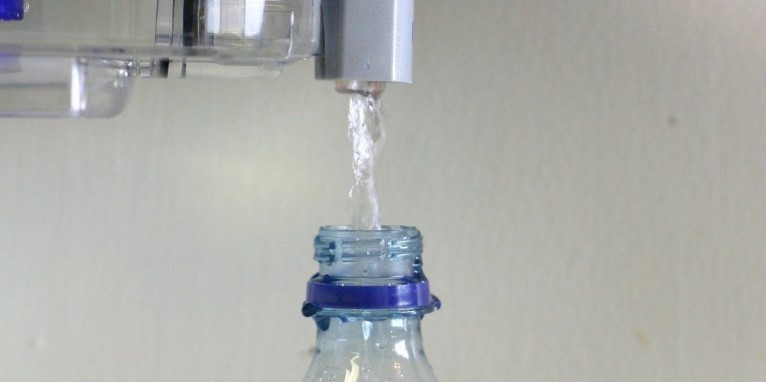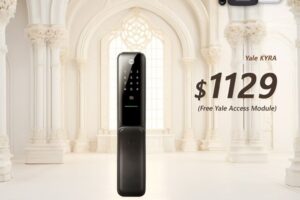
Access to clean and safe drinking water is essential for good health. In our homes and workplaces, water purifier and dispensers play a crucial role in ensuring we consume clean water. But the question arises, is it better to have a combined water purifier and dispenser?
Understanding the benefits and potential drawbacks of these combined units helps make an informed decision.
Understanding Water Purifier and Dispensers
What is a Water Purifier?
- Removes Contaminants: Water purifiers filter out impurities like bacteria, viruses, and heavy metals.
- Types of Purifiers: There are various types, such as RO (Reverse Osmosis), UV (Ultraviolet), and carbon-based filters.
- Health Benefits: Drinking purified water reduces the risk of waterborne diseases.
What is a Water Dispenser?
- Provides Convenience: Water dispensers provide easy access to drinking water.
- Types of Dispensers: Dispensers come in various forms, such as countertop, freestanding, and wall-mounted units.
- Temperature Control: Many dispensers offer options for hot, cold, or room-temperature water.
How They Function Individually
- Separate Units: When used separately, a purifier focuses solely on cleaning the water, while a dispenser only serves the water.
- Installation: Purifiers often need installation near a water source, while water dispenser can be placed anywhere.
- Maintenance: Both units require regular maintenance to ensure optimal performance.
Benefits of a Combined Water Purifier and Dispenser
Convenience and Ease of Use
- All-in-One Solution: A combined unit offers the convenience of purified water dispensed directly.
- Space-Saving: It saves space by integrating two functions into one device.
- User-Friendly: Easy to use, with simple controls for dispensing water.
Space-Saving Advantages
- Compact Design: Moreover, combined units have a compact design, ideal for small kitchens or offices.
- Less Clutter: Reduces the number of appliances needed, leading to a tidier space.
- Streamlined Appearance: Provides a sleek, modern look.
Continuous Access to Clean Water
- Consistent Quality: Ensures a steady supply of purified water.
- Instant Availability: No waiting time for water to be purified; it’s ready whenever needed.
- Hydration Made Easy: Encourages regular water consumption.
Cost-Effectiveness Over Time
- Initial Investment: While the upfront cost might be higher, it can save money in the long run.
- Reduced Maintenance Costs: Only one unit to maintain instead of two.
- Energy Efficiency: Modern combined units are designed to be energy efficient.
Potential Drawbacks
Initial Cost
- Higher Purchase Price: Combined units tend to be more expensive upfront.
- Budget Considerations: Important to assess if the initial cost fits within your budget.
- Long-Term Savings: Weigh the initial cost against potential long-term savings.
Maintenance Requirements
- Regular Upkeep: Requires regular water filter changes and cleaning.
- Service Needs: May need professional servicing periodically.
- Time Commitment: Maintenance might take up more time compared to individual units.
Possible Limitations in Purification Capacity
- Limited Capacity: Some units might not handle large volumes of water.
- Specific Needs: Important to ensure the unit meets your specific purification needs.
- Performance Variation: Quality can vary between models, so research is essential.
Comparison with Separate Units
Cost Comparison
- Initial Investment: Initially, a combined unit might seem costly. However, purchasing a separate purifier and dispenser can also add up.
- Long-term Savings: Over time, combined units often save money. Therefore, maintenance and filter replacements for one unit cost less than for two separate units.
- Energy Efficiency: Combined units typically use less energy than running two appliances. Thus, this reduces monthly electricity bills, making it a cost-effective choice in the long run.
Space and Installation Considerations
- Space Efficiency: A combined unit takes up less space than two separate units. This is ideal for smaller kitchens, offices, or areas with limited space.
- Easy Installation: Combined units often have simpler installation processes. You only need one water connection and one power outlet, simplifying setup.
- Aesthetic Appeal: A single unit provides a sleek, streamlined look. It avoids the clutter of multiple devices, creating a tidier and more organised space.
Ease of Maintenance
- Simplified Upkeep: Maintaining one unit is easier than maintaining two. You only have to worry about one set of filters and one cleaning schedule.
- Cost of Maintenance: While combined units can have higher initial maintenance costs, overall, maintaining one unit tends to be less expensive than two.
- Time-Saving: With a combined unit, you save time on maintenance. So, fewer parts mean less time spent on cleaning and upkeep.
Water Quality and Taste Differences
- Consistency in Purification: Combined units ensure consistent water quality. Additionally, the purification process remains uniform, providing better-tasting water.
- Advanced Filtration: Many combined units feature advanced filtration technologies. Thus, these technologies remove more contaminants, improving water taste and safety.
- User Experience: Having purified water instantly available enhances the drinking experience. Additionally, there’s no need to wait for water to be purified or chilled.
User Scenarios
Best for Home Use
- Family Convenience: Families benefit from the convenience of combined units. Moreover, easy access to purified water encourages regular hydration for all members.
- Health and Safety: Ensuring children and elderly family members have safe drinking water is crucial. Combined units provide this assurance with minimal effort.
- Space-Saving: In homes with limited kitchen space, combined units free up room for other appliances or storage.
Suitable for Offices and Commercial Spaces
- Employee Health: Providing clean drinking water promotes employee health and well-being. Therefore, a combined unit makes it easy for employees to stay hydrated.
- Cost-Effective Solution: For businesses, combined units can be a cost-effective choice. They reduce the need for bottled water, saving money over time.
- Professional Appearance: A sleek, combined unit adds to the professional look of an office space. Additionally, it’s a practical and aesthetically pleasing choice.
Ideal for Areas with Limited Space
- Compact Design: Combined units are perfect for small apartments, dorm rooms, or RVs. Additionally, their compact design maximises limited space.
- Versatile Placement: These units can fit into various settings. Whether in a tiny kitchen or a corner of an office, they provide flexible placement options.
- Efficiency: In areas where space and resources are limited, the efficiency of a combined unit is invaluable. It meets the need for purified water without taking up much room.
Key Features to Look For
Filtration Technology
- Advanced Filters: Look for units with advanced filtration technologies. Moreover, options like RO, UV, or carbon filters provide thorough purification.
- Multi-Stage Filtration: Multi-stage filters offer better protection. They remove a wider range of contaminants, ensuring safer drinking water.
- Filter Lifespan: Check the lifespan of the filters. Therefore, a longer-lasting water filter means less frequent replacements and lower maintenance costs.
Capacity and Size
- Water Capacity: Consider the unit’s water capacity. So, ensure it meets your daily consumption needs, whether for a single person or a large family.
- Compactness: Evaluate the size of the unit. Make sure it fits the available space without causing congestion.
- Storage Features: Some units come with additional storage features. Additionally, these can be handy for keeping cups or bottles nearby.
Additional Features
- Hot and Cold Water Options: Look for units offering both hot and cold water. Therefore, this provides versatility, allowing you to enjoy a range of beverages.
- Smart Features: Some units have smart features like digital displays or touch controls. Moreover, these add convenience and enhance the user experience.
- Energy Efficiency: Energy-efficient units save on electricity bills. So, look for models with energy-saving modes or certifications.
Energy Efficiency
- Certified Models: Choose units with energy efficiency certifications. Moreover, these models use less power, reducing your environmental footprint.
- Power-Saving Modes: Look for features like automatic shut-off or sleep modes. Thus, these features help save energy when the unit is not in use.
- Long-Term Savings: Energy-efficient units might cost more upfront. However, they save money on electricity bills over time.
Conclusion
However, a combined water purifier and dispenser offers numerous benefits. It provides convenience, space-saving advantages, and cost-effectiveness. However, it’s important to consider potential drawbacks like initial cost, maintenance requirements, and purification capacity. When comparing with separate units, combined units often come out ahead in terms of cost, space efficiency, and ease of maintenance.
Moreover, they are suitable for various user scenarios, including home use, office settings, and areas with limited space. Ultimately, the decision to choose a combined water purifier and dispenser depends on individual preferences and requirements. So, evaluate your needs, compare options, and make an informed choice for better health and convenience.
Also Check: Clean Drinking Water Solutions: Purifiers and Dispensers




